#ig2021
Text
Mutual anticipation can contribute to self-organization in human crowds *
Abstract
Human crowds provide paradigmatic examples of collective behavior emerging through self-organization. Understanding their dynamics is crucial to help manage mass events and daily pedestrian transportation. Although recent findings emphasized that pedestrians’ interactions are fundamentally anticipatory in nature, whether and how individual anticipation functionally benefits the group is not well understood. Here, we show the link between individual anticipation and emergent pattern formation through our experiments of lane formation, where unidirectional lanes are spontaneously formed in bidirectional pedestrian flows. Manipulating the anticipatory abilities of some of the pedestrians by distracting them visually delayed the collective pattern formation. Moreover, both the distracted pedestrians and the nondistracted ones had difficulties avoiding collisions while navigating. These results imply that avoidance maneuvers are normally a cooperative process and that mutual anticipation between pedestrians facilitates efficient pattern formation. Our findings may influence various fields, including traffic management, decision-making research, and swarm dynamics.
INTRODUCTION
Human crowds engage in a rich variety of self-organizing behaviors, as do other animals, in phenomena such as birds flocking and fish schooling (1, 2). They often exhibit fascinating “global” pattern formations that spread throughout a group over a range of inter-individual interactions. Human crowd behavior and pedestrian flows have become crucial research fields to help manage mass events and pedestrian transportation safely and comfortably. Although some collective patterns of organization in human crowds such as stop-and-go waves and crowd turbulence may lead to serious disasters, such as deadly trampling accidents (3, 4), there are other phenomena that provide functional benefits to the group even if there is no conductor or external control. Lane formation, where unidirectional lanes are spontaneously formed in bidirectional pedestrian flows, is the most notable example of effective self-organization to reduce the risk of collisions between pedestrians and enhance the efficiency of traffic flow (5–7). To accomplish efficient crowd management and minimize risks, it is therefore important to understand individual interactions underlying collective human behavior.
Computational models often describe pedestrian dynamics with an interaction potential, or a “social force” inspired from the repulsive potential among physical particles (8, 9). Although these physics-inspired models have remarkably improved our understanding of pedestrian crowd dynamics, they do not completely explain the empirical observations. In particular, recent empirical and experimental findings have stressed that inter-individual interaction is essentially anticipatory in nature, rather than a distance-dependent physical force (7, 10–16). Pedestrians’ motions are influenced by anticipated future positions rather than the current positions of their neighbors. This suggests that pedestrians in a crowd are not just passively repelled by other pedestrians but actively find a passage through a crowd by anticipating and negotiating with neighbors to avoid collisions in advance. Social force models thus have been extended to capture the anticipatory nature of pedestrian behavior with velocity-dependent interactions rather than distance-dependent ones; in addition, models that are more vision-based have been developed (10–14).
The anticipatory nature in human interactions has been reported in a wide range of pedestrian situations from bottlenecks to hallways, regardless of whether the environment is indoor or outdoor, and seems to be fundamental for collective human behavior (11, 13, 15). Understanding the relationship between individual anticipatory behaviors and collective pattern formation, therefore, is an important issue. Anticipating neighbors’ motions may attenuate head-on collisions between individuals in advance, help to smooth a pedestrian’s pathway through a crowd, and facilitate an efficient transition to emergent pattern formation. However, despite unprecedented growth in experimental crowd research (17), the effects of anticipatory behaviors on self-organization in human crowds remain poorly understood. In particular, there has been no attempt to experimentally intervene in the cognitive ability of pedestrians’ anticipation.
In this study, we tested the hypothesis that collective pattern formation in human crowds is facilitated through anticipatory navigation behavior. We conducted an intervention experiment of lane formation where some participants were asked to walk while using mobile phones because the use of a mobile phone while walking was thought to interfere with their ability to anticipate neighbors’ motions. Previous experiments on gait characteristics of single pedestrians reported that mobile phone tasks made pedestrians’ perceptual visual fields narrow when they looked down and focused on the phone, and they distracted visual attention such as scanning frequency of the surrounding environment (e.g., oncoming traffic) (18, 19). Therefore, distracting pedestrians via a mobile phone task should make it more difficult for them to anticipate their neighbors’ motions because pedestrian motion is strongly influenced by other oncoming pedestrians even when they are well separated (11). In addition, it may also be difficult for pedestrians walking toward distracted pedestrians to anticipate the actions of distracted walkers. Thus, self-organization in human crowds facilitated by anticipation may be inferred when this type of distraction causes a deterioration not only of local collision risks but also of global pattern formation.
We demonstrated that the distraction slows overall walking speed and delays the onset of global pattern formation. Moreover, we observed that both the distracted pedestrians and the nondistracted ones had difficulties navigating, suggesting that coordinated avoidance maneuvers that successfully avoid collisions benefit from the anticipation of mutually interacting pedestrians. These results are consistent with the concept of self-organization in human crowds facilitated by mutual anticipation. Our findings provide insights into understanding the important role of individual cognitive abilities of anticipation in self-organizing systems.
RESULTS
Influence of visual distraction on the emergence of lane formation
Fig. 1 Bidirectional flow experiments with distracted pedestrians.
(A) Snapshot from an experiment under the front condition (the distracted pedestrians located in the front of a group), where locations of the distracted pedestrians are marked by blue circles. (B) Representative examples of reconstructed pedestrian trajectories under (i) front, (ii) middle, (iii) rear, and (iv) baseline conditions. Yellow (red) lines represent pedestrians moving from left (right) to right (left). Photo credit: Hisashi Murakami, Kyoto Institute of Technology; The University of Tokyo.OPEN IN VIEWER
Figure 1B shows the development over time of the traffic organization in bidirectional pedestrian flow under each condition. Pedestrians from the two groups initially walked in opposite directions along the corridor, deviating from the direct path to the destination as necessary to seek their passages through a crowd and avoid oncoming pedestrians. Subsequently, they self-organized into two or more unidirectional lanes and then they followed straight courses along the generated lanes. The distracted pedestrians under the front condition seemed to disturb overall behavior more than they did in the other conditions.
Fig. 2 Walking speed and onset of lane formation.
(A) Pedestrians’ walking speeds under each condition. Each data point represents a pedestrian. (B) Onset of lane formation under each condition. Each data point represents a trial. Asterisks indicate the statistical significance (***P < 0.001; *P < 0.05; ns, P > 0.05). Box-and-whisker plots represent the median of the data (central thick line), data between the first and third quartiles (box), data within 1.5× the interquartile range of the median (whiskers), and outliers (unfilled circles). BL, baseline condition.OPEN IN VIEWER
To investigate the self-organization process of lane formation, we calculated the order parameter, which is widely used for measuring the stratification degree of bidirectional flow (6, 7, 20). The order parameter was defined by discretizing the measurement area into several rows along the corridor and averaging the proportion of individuals moving in the same direction in each row (for details, see Materials and Methods). Its value takes 0 when the same number of pedestrians in a row move in different directions or when no individuals occupy a row, and it approaches 1 (which suggests clear lane formation) if most pedestrians in a row move in the same direction. Under the front condition in particular, we observed that lanes developed more slowly than under the other conditions (see fig. S2 for plots of the order parameter as a function of time). To verify this, we investigated the onset of lane formation by calculating the time at which the order parameter exceeded 0.8 for the first time after the beginning of a trial. This procedure was introduced and justified in our previous study (7) (also see Materials and Methods). We found that the onset of lane formation under the front condition was significantly later than under the baseline condition but not in the other conditions (versus front: W = 33.5, P = 0.04, N = 24; versus middle: W = 72, P = 0.76, N = 24; versus rear: W = 96.5, P = 0.92, N = 24; Fig. 2B). This suggests that only the distracted pedestrians under the front condition disturbed the facilitation of self-organization.
In summary, mobile phone distractions significantly influenced overall walking speeds and the onset of lane formation, especially when the distracted pedestrians were in the front of the group. The following question thus arises: How is individual behavior, such as local collision avoidance in particular, influenced by the distraction? We answer this question in the next section.
Local collision avoidance under the front condition
In this section, we focus on pedestrians’ behaviors until the onset of lane formation, where anticipatory collision avoidance behavior most likely happens (7), under the baseline condition and front condition. We assumed that the mobile phone distraction would increase the risk of local collision among pedestrians and that pedestrians would need to perform sudden large turns or steps to avoid collision. In other words, if pedestrians anticipated the motions of oncoming neighbors, then they could avoid each other in advance, and therefore they would not take sudden large steps. To verify this assumption, we analyzed pedestrians’ behaviors in more detail through a stratified analysis where we divided the front-condition data into three subgroups: (i) distracted, distracted pedestrians; (ii) same-directed, pedestrians walking in the same direction as the distracted ones; and (iii) opposite-directed, pedestrians walking in the opposite direction to the distracted ones.
Fig. 3 Suddenness of turns and turn intensity.
(A) Suddenness of turns, calculated as the absolute value of the product of angular deviation and change in speed. (B) Turn intensity, calculated as the product of step length and angle. Error bars are 95% confidence intervals. When compared to the baseline, the values in the other groups are larger, suggesting that pedestrians under the baseline condition did not perform sudden large steps, but members of the other groups were forced to perform them.OPEN IN VIEWER
The above analysis focused on temporal features of pedestrians’ behaviors; we also investigated various spatial features (Fig. 3B and fig. S4). We focused on the y components of movements (perpendicular to the corridor length; fig. S4A). Turning was defined as direction changes in the y component of an individual’s trajectory, and movements between consecutive turning points were regarded as “steps.” We defined “step length” as the y component of a step and “step angle” as the absolute value of angle deviation of a step from the desired direction (the x axis in this case). Considering the results of our analysis of the temporal features of pedestrian behavior, we assumed that step lengths and step angles would take large values at one point in time if pedestrians performed sudden large steps. Pedestrians under the front condition, regardless of group, demonstrated steps with large lengths and angles as compared to those in the baseline group (see fig. S4B). This suggests that pedestrians under the front condition took large steps to avoid collisions immediately before meeting oncoming neighbors. We then calculated the product of step length and angle as an index of turn intensity (Fig. 3B). As compared to the baseline values, the values in the other groups are larger, suggesting that pedestrians under the baseline condition did not perform sudden large steps along the y axis, but members of the other groups did (Fig. 3B). In summary, we observed that both distracted pedestrians and nondistracted pedestrians performed sudden large turns or steps to avoid imminent collisions, implying that they had difficulties navigating.
Additional experiments with slow-walking pedestrians
To verify the possibility that the decrease in walking speed induced by mobile phone distraction influenced the lane formation process rather than anticipatory ability, we conducted additional experiments. The experimental procedure was the same as the main experiment except for one instruction: The three selected pedestrians were asked to walk slowly instead of performing mobile phone tasks. As with the main experiment, we considered three conditions regarding where these three slow-walking pedestrians were located in the group: front, middle, and rear. The experiments were replicated three times under each condition.
Fig. 4 Results of additional experiments with slow-walking pedestrians.
(A) Walking speed. (B) Onset of lane formation. Asterisks indicate the statistical significance (***P < 0.001; ns, P > 0.05) of differences between the baseline condition and each of the other conditions. See Fig. 2 for a description of the box-and-whisker plots.OPEN IN VIEWER
Additional analysis on how pedestrians walk before lane formation
When pedestrians anticipate their neighbors’ motions to seek their paths in dynamic pedestrian flow, their path-seeking behavior involves them deviating from their desired directions, resulting in exploratory movements (7). It is possible that the distraction introduced in our experiments influenced these exploratory movements. We analyzed the diffusive properties along the y axis before lane formation using the mean-squared displacement (section S1). According to this analysis, the diffusive characteristics of distracted pedestrians’ movements varied by trial, even when including the normal diffusive properties that indicate almost straight paths along the corridor with only small lateral deviations (fig. S6). The nondistracted walkers and baseline group demonstrated super-diffusive characteristics of movement patterns in all trials (fig. S6), in accordance with the results of a previous study (7). Therefore, the distracted pedestrians sometimes did not perform their usual exploratory walking in the crowd.
DISCUSSION
In the present study, we addressed whether self-organization in human crowds can be promoted by anticipatory interaction among individuals. To this end, we conducted bidirectional flow experiments, where some participants were asked to walk while typing into mobile phones. Distracting pedestrians at the front of a group slowed down overall crowd movement and delayed onset of global lane formation. In addition, the increase of local collision avoidance demonstrated the indirect effects of the experimental manipulation on nondistracted pedestrians as well as the direct effects on distracted ones. The distraction thus locally reduced individual anticipation ability and globally disturbed the self-organization process through the propagation of reduced levels of anticipation in the crowd. These results are consistent with the idea that self-organization in human crowds is facilitated by mutual anticipation.
The mobile phone distraction altered behaviors of distracted pedestrians. We observed that they intensely performed local collision avoidance behavior compared to normal pedestrians under the baseline condition. This is consistent with the assumption that pedestrians who are able to anticipate neighbors’ motions can avoid collisions in advance. Resources of visual attention and/or other cognitive processing are limited (21); hence, pedestrians focusing on their phones would be unable to dedicate their visual resources to their walking task. According to a previous study, single walkers fixed their eyes approximately 75% of the time on the mobile phone while typing (18). Thus, it would not be unusual if distracted pedestrians performed emergency avoidance movements because they were unaware of oncoming people. Moreover, it is known that humans are notoriously bad at walking in a straight line in the absence of visual cues (22). In our experiments, distracted pedestrians rarely seemed to access the visual cues around them. Therefore, they might fail to execute collision avoidance behaviors in advance even if they were aware of oncoming people.
Somewhat unexpectedly, nondistracted pedestrians, especially those moving toward distracted ones, also intensely performed local collision avoidance behavior as compared to pedestrians under the baseline condition. This suggests that their anticipatory behavior toward oncoming pedestrians sometimes did not work well, even though they were able to dedicate their visual resources to their walking task. We speculate that this local collision avoidance of opposite-directed pedestrians was caused by their uncertainty of the motions of distracted walkers. The opposite-directed pedestrians most likely obtained less information from the gaze direction of the distracted ones, from which humans usually infer other people’s movement trajectories (23). Because distracted pedestrians looked down and focused their eyes on the phone, opposite-directed ones would be uncertain about the motions of distracted ones. Then, how do opposite-directed pedestrians deal with the uncertain motions?
In behavioral neuroscience studies, human decision-making has been considered in a serial “decision-then-action” framework where sensory evidence is collected and then action is taken. However, recent studies have stressed a “decision-during-action” framework because the decision-making may involve deadlines and time constraints for action (16, 24). In this framework, action plans can be prepared and even launched before information from the sensory cues is completely accumulated. We applied these ideas to the local collision avoidance behaviors we observed. In the baseline situation with no particular problems, pedestrians moving toward a destination should balance the benefits of making the correct decision (e.g., safely avoiding collisions) with its costs (e.g., the time constraint to reach the destination) and react accordingly. However, if uncertainty of motion is introduced in the form of oncoming distracted people, pedestrians will have to continue to seek rare information. Consequently, they will sometimes reach the situation where a collision is imminent and turn immediately before colliding with the distracted walkers. As an extended effect of the irregular behaviors of the opposite-directed pedestrians, same-directed pedestrians also might intensely perform local collision avoidance behavior.
In this way, we consider that the distraction in our experiment not only directly diminished the anticipatory ability of the distracted walkers but also indirectly influenced that of the nondistracted ones. This then induced collision avoidance behavior even though the nondistracted walkers were able to dedicate their visual resources during walking. In other words, collisions can be avoided in advance only if anticipation is performed mutually among pedestrians. Therefore, mutual anticipation would contribute more to a smooth walk than one-way anticipation. Together, the results show that avoidance maneuvers are normally a cooperative process, and self-organization (in this case, lane formation) is improved if pedestrians mutually anticipate their motions.
Understanding anticipatory interaction between pedestrians would provide fundamental insights into crowd dynamics and a crucial step toward effective and safe management of mass events. Our results describe how people navigate in close surroundings and the degree of effect that distracted people have on a crowd. Potential real-life applications in daily crowd management include efficient signage, customized navigation, and wayfinding. Distracted pedestrians can reduce the efficiency of pedestrian flows and, hence, the capacity of pedestrian facilities, considerably. As more and more people tend to stare at their phones while walking, it may be necessary to adjust planning and capacity manuals and design guidelines for pedestrian facilities. Using an eye-tracking system would be an effective measure to fully explore the effects of various degrees of anticipation on interactions among pedestrians according to the difficulty of the distraction task and the number of distracted pedestrians (i.e., their proportion to the total). Because human cognitive resources are limited and competitive (21), nonvisual distractions (i.e., something other than “looking at a phone”) may also influence the anticipatory ability of pedestrians. It would therefore be worthwhile to consider conducting different kinds of distraction experiments, for example, having pedestrians do mental math problems while walking or perform some other mental task while walking.
Moreover, we experimentally investigated the functional anticipatory interactions in human crowds, but it is important to explore representations in theoretical modeling. We expect that our results will provide quantitative support to existing models, especially vision-based or velocity-based ones (10–12, 14), some of which are inspired from a cognitive science approach rather than physics-inspired repulsive interactions. In these models, pedestrians actively select the path with the longest distance to the predicted collision with the neighbors. For example, it would be reasonable to consider a simulation that represents the distracted pedestrians with distance-dependent interactions and nondistracted pedestrians with velocity-dependent ones. Yet, at the same time, the present findings may additionally require that pedestrians alter their behavior depending on the uncertainty of oncoming neighbors’ motions. Human crowd models that better incorporate anticipatory behavior will provide a more reliable description and prediction of pedestrian flows and therefore open the way for the improvement of architecture and exit routes, as well as management strategies during mass events. Furthermore, future studies focusing on anticipation in human crowds might bring innovative perspectives in other research fields concerned with self-organizing systems in general. For example, anticipatory behavior contributes to cooperative human decision-making through synchronization between two persons (13, 15); animal groups are considered to achieve robust collective behavior through mutual anticipation (25–30); and swarm robotics has problems in navigation and collision avoidance in the real world and needs a previously unknown approach in industrial applications (31). Anticipation likely plays a key role in a wide range of self-organizing systems. Thus, we expect that the present findings will become a foothold for building future models of collective human behavior, biological collectives, and swarm robotics.
MATERIALS AND METHODS
Experimental design
The experimental setup was adapted from that described in our previous studies (6, 7). Fifty-four male participants were recruited for the study from university students (mean age = 21.0 ± 2.3 years). We used a straight corridor composed of three main parts: a measurement area (10 × 3 m) centered in a corridor and two waiting areas (12 × 3 m), one on each side of the measurement area (fig. S1). Buffer zones (2 × 3 m) between the measurement and waiting areas allowed participants to stabilize their walking speed when entering the measurement area. Each waiting area was divided into sections along its length with nine lines perpendicular to the long axis of the corridor. The lines were separated by an equal distance of 1.5 m and were used as starting lines in the experiments. Destination areas were set at the end of each waiting area.
The experimental procedure was similar to that in our previous experiments (6, 7); however, we revised some details to intervene in the anticipatory interactions among pedestrians in crowds by making some of the participants distracted by means of mobile phone use. We first divided participants into two groups of 27 to have balanced bidirectional flows. Then, participants in each group were instructed to take random positions on randomly selected starting lines in each waiting area, with three participants per line. At the start signal, they were asked to walk in their usual way toward the exit at the opposite end of the mock corridor and to continue walking even after exiting the measurement area until entering the destination area on the opposite side to avoid the measurement area becoming jammed at the end of the experiment. Before starting the experiments, we informed all participants that there could be three people who would walk while using a mobile phone. We did this to decrease the risk of direct collision involving physical contact that could be induced by the distraction and to ensure that the same number of participants knew of the existence of distracted pedestrians during the experiment (i.e., to avoid a sort of progressive learning process in which participants gradually begin to understand details of the experimental procedure).
Three participants were randomly selected from one of the groups to use a mobile phone during the experiments to distract pedestrians visually and intervene in the anticipatory interactions among them. The three phone users were placed in only one of the two groups during a trial to decrease the risk of collision among distracted pedestrians, and we did not observe any hard physical contact in any of our experiments. Each distracted participant performed the mobile phone tasks for as many as two replicates. The three distracted participants were instructed on how to perform the mobile phone tasks immediately before each trial as described below.
In addition to observing the distracted pedestrians’ behavior, we attempted to observe the behavior of pedestrians who walked toward the distracted pedestrians. We hypothesized that distracted pedestrians located in the front of the group, which could directly collide with the oncoming crowd, would have the most influence on overall crowd dynamics in our bidirectional flow experiment. We therefore set three experimental conditions in addition to a baseline condition in which nobody was distracted: front, middle (mid), and rear. Under the front condition, three participants in either group were randomly selected to perform the additional task while walking and assigned to the frontmost three positions (i.e., behind the first starting line) of their respective group. The mid- and rear conditions were the same as the front condition except that the distracted participants were assigned to the middle (the fifth starting line) or rear (the ninth line) positions, respectively.
We conducted two pretest trials without the mobile phone distractions to confirm participants had correctly understood instructions given to them before conducting the main experiments. The main experiments were divided into two sessions of six blocks each. As mentioned previously, we divided participants into two groups that were maintained during a single session, but the group members were randomly shuffled between the two sessions. In each block, four trials with four different conditions (i.e., front, middle, rear, and baseline) were conducted in a randomized order. Moreover, the arrangement of participants at trial onset took into account the statistical effects of the experiment environments associated with walking direction (see also section S2). In total, experiments were replicated 12 times under each condition.
To control for the possibility that a decrease of walking speed induced by the mobile phone distraction (18) might influence the lane formation process rather than anticipatory ability, we conducted additional experiments that were similar to the above ones, but the three selected pedestrians were only asked to walk slowly instead of performing a task on a mobile phone. As with the main experiment, we considered the same three conditions regarding where these three slow-walking pedestrians were located in the group: front, middle, and rear. The additional experiments were replicated three times under each condition.
Mobile phone task
Distracted walking has become such a major cause of pedestrian accidents that many researchers have begun to investigate the influence of mobile phone distraction, especially on the behavior of a single pedestrian at a crossing. To introduce a mobile phone distraction in a crowd experiment, we selected a typing task, which has been shown to clearly distract pedestrians’ visual attention in terms of scanning frequency, fixation points, and fixation times toward traffic environments (18, 19). Inspired by previous studies, we used a simple arithmetic task with a single-digit addition problem similar to Kraepelin’s arithmetic test. A simple interface was constructed with Android Studio version 3.5 (https://developer.android.com), in which a single-digit addition problem, numeric keyboard, and OK button were presented on the display (fig. S7, A to C). After the user types in an answer and pushes the OK button, the next problem is presented regardless of whether the answer was correct or incorrect. To remove the influence of different mobile phones, the same phone model was used by all participants in the distracted role (UMIDIGI A3, 5.7-inch display, aspect ratio 19:9, 186 g in weight).
We asked participants to start solving problems from the moment they heard the start signal until they entered the destination area and to endeavor to solve as many problems as possible. The number of answers and the proportion of correct answers were recorded for each participant. After one rear-condition trial, however, one mobile phone had a technical problem, so the number of answers and proportion of correct answers were lost for that one sample (i.e., we obtained 35 samples for the rear condition and 36 samples for the other conditions). We then checked whether there were any differences in performance of calculations among the conditions. To control for the effect of differences in walking distance and speed among conditions on the number of answers, we estimated the number of answers per second by using the number of answers, distance between the start lines and the start of the opposite destination area (i.e., the approximate distance that pedestrians walked during the calculation period), and the median value of the walking speed (traveled distance in the measurement area divided by the crossing time) of the distracted pedestrians under each condition. We confirmed that there were no significant differences among the conditions (i.e., front, middle, and rear; see fig. S7, D and E) in number of answers per second (H = 2.83, P = 0.24, N = 107) or the proportion of correct answers (H = 1.34, P = 0.51, N = 107) under each condition.
Video tracking
In all experiments, we recorded the measurement area from above using a Sony FDR-AX60 camcorder (3840 × 2160 pixels, 30 frames per second) fixed at a height of 21 m. The participants wore black T-shirts and different colored caps (yellow or red) to make it easier to distinguish the different flows from one another. From the video images, we tracked the time series of the individuals’ positions frame-by-frame, using the image-processing software PeTrack (32).
Ethical note
This study was approved by the Ethics Committee of the University of Tokyo, and informed consent was obtained from all participants.
Definition of the order parameter and onset of lane formation
To investigate the self-organizing process of lane formation, we calculated the order parameter, which was originally used for colloidal fluids, but is now used for measuring the stratification degree of various bidirectional flows. The order parameter was measured by discretizing the measurement area into 0.2-m × 0.2-m cells (50 columns × 15 rows), as proposed and justified in previous studies (6, 33). We then focused on the rows of aligned cells along the corridor. The local order parameter φj in the jth row was calculated as
φj=[(njL−njR)/(njL+njR)]2if at least one pedestrian occupiesthe row,0 otherwise
()
(1)
Here, njL and njR are the numbers of left and right walkers in the jth row, respectively. The global order parameter Φ was then calculated as
Φ=(1/N) ΣNφj
()
(2)
where N is the number of rows. Φ was smoothed over a time window of three frames. Its value becomes 0 when the pedestrians in a row move in different directions or when no individuals occupy the row and approaches 1 if most of the pedestrians in the row move in the same direction, suggesting clear lane formation.
By using the order parameter, we considered the onset of unidirectional lanes as the time at which Φ first exceeded 0.8, as verified in a previous study (7). We considered this value reasonable in the previous study (7) because (i) the approximate time appropriately indicates when the lane formation is first achieved in a bidirectional flow; (ii) the parameter value does not significantly affect the onset of lane formation as long as it lies in a certain interval; and (iii) Φ reached this value in all trials (this was also true in the present experiment), so the onset of lane formation was determinable in all trials.
Statistical analysis
One-tailed Mann-Whitney–Wilcoxon tests were used to test differences of walking speed and the onset of lane formation between the baseline condition and each of the other conditions (front, middle, and rear) in the main experiments with distracted pedestrians and the additional experiments with slow-walking pedestrians. When making multiple comparisons, P values were adjusted by using false discovery rate control (34). For the mobile phone task, Kruskal-Wallis tests were used to test differences of number of answers per second and the proportion of correct answers among the experimental conditions. All statistical analyses were conducted using R version 3.6.0 (The R Foundation for Statistical Computing, Vienna, Austria).
Acknowledgments
We appreciate the editorial handling of A. Clauset and acknowledge constructive comments from two anonymous reviewers. We are also grateful to all of the participants and members of the Nishinari laboratory for help during the experiments and to D. Yanagisawa, Y. Oyama, M. Furukawa, and M. Abe for helpful discussions. Funding: This work was supported by JSPS KAKENHI grant numbers JP20K20143, JP20K14992, and JP19K20384; JST-Mirai Program grant numbers JPMJMI17D4 and JPMJMI20D1; and MEXT Leading Initiative for Excellent Young Researchers grant number JPMXS0320200282. Author contributions: H.M., C.F., and Y.N. designed the study; H.M., C.F., and Y.N. performed the experiments; H.M. analyzed the data; K.N. provided funding acquisition, project administration, and resources; and H.M. and Y.N. wrote the paper. Competing interests: The authors declare that they have no competing interests. Data and materials availability: All data needed to evaluate the conclusions in the paper are present in the paper and/or the Supplementary Materials. Additional data related to this paper may be requested from the authors.
#IG#IG2021#IG Nobel Prize#Nobel#Prize#2021#Research#Studies#Experiments#Data Logging#NO DISASSEMBLE#science.org
0 notes
Photo
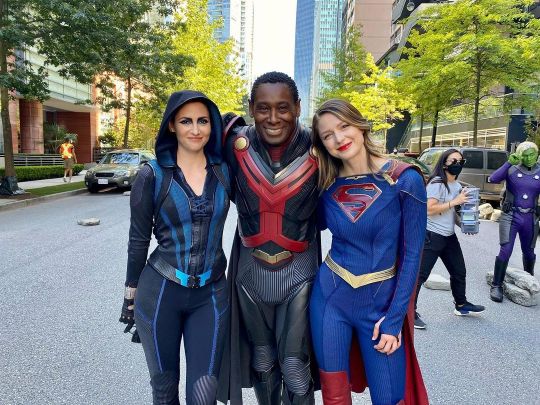
melissabenoist: thank you for an incredible 6 years—the cast who became family, everyone who worked on the show, all of you who watched us week after week ♥️♥️♥️ that’s a wrap on @supergirlcw
#melissa benoist#instagram#ig2021#Chyler Leigh#superfamily#melissabenoist#instagram2021#by ahome#supergirl#supergirls6
630 notes
·
View notes
Text


(screen capture)
205 notes
·
View notes
Photo

tomtaylormade: Wow. In 2014, @bruno_redondo_f and I created a new Supergirl, Lara Lane-Kent, in Injustice. And Sasha Calle as #Supergirl in the upcoming film, The Flash, is uncanny.
#TheFlash #SashaCalle #flash #DCComics #DC #Comics
#the flash movie#supergirlmovie#sasha calle#lara lane kent#sashacalle#supergirl#supergirl movie#IG2019#ig2021
36 notes
·
View notes
Link
The 2021 Ig Nobel Prize Winners
The 2021 Ig Nobel Prizes were awarded at the 31st First Annual Ig Nobel Prize ceremony, on Thursday, September 9, 2021. The ceremony was webcast.
BIOLOGY PRIZE [SWEDEN]:
Susanne Schötz for analyzing variations in purring, chirping, chattering, trilling, tweedling, murmuring, meowing, moaning, squeaking, hissing, yowling, howling, growling, and other modes of cat–human communication.
REFERENCE: “A Comparative Acoustic Analysis of Purring in Four Cats,” Susanne Schötz and Robert Eklund, Proceedings of Fonetik 2011, Speech, Music and Hearing, KTH, Stockholm, TMH-QPSR, 51.
REFERENCE: “A Phonetic Pilot Study of Vocalisations in Three Cats,” Susanne Schötz, Proceedings of Fonetik 2012, Department of Philosophy, Linguistics and Theory of Science, University of Gothenburg, Sweden.
REFERENCE: “A Phonetic Pilot Study of Chirp, Chatter, Tweet and Tweedle in Three Domestic Cats,” Susanne Schötz, Proceedings of Fonetik 2013, Linköping University, Sweden, 2013, pp. 65-68.
REFERENCE: “A Study of Human Perception of Intonation in Domestic Cat Meows,” Susanne Schötz and Joost van de Weijer, Proceedings of the 7th International Conference on Speech Prosody, Dubin, Ireland, May 20-23, 2014.
REFERENCE: “Melody in Human–Cat Communication (Meowsic): Origins, Past, Present and Future,” Susanne Schötz, Robert Eklund, and Joost van de Weijer, 2016.
WHO TOOK PART IN THE CEREMONY: Susanne Schötz
ECOLOGY PRIZE [SPAIN. IRAN]:
Leila Satari, Alba Guillén, Àngela Vidal-Verdú, and Manuel Porcar, for using genetic analysis to identify the different species of bacteria that reside in wads of discarded chewing gum stuck on pavements in various countries.
REFERENCE: “The Wasted Chewing Gum Bacteriome,” Leila Satari, Alba Guillén, Àngela Vidal-Verdú, and Manuel Porcar, Scientific Reports, vol. 10, no. 16846, 2020.
WHO TOOK PART IN THE CEREMONY: Leila Satari, Alba Guillén, Àngela Vidal-Verdú, Manuel Porcar
CHEMISTRY PRIZE [GERMANY, UK, NEW ZEALAND, GREECE, CYPRUS, AUSTRIA]:
Jörg Wicker, Nicolas Krauter, Bettina Derstroff, Christof Stönner, Efstratios Bourtsoukidis, Achim Edtbauer, Jochen Wulf, Thomas Klüpfel, Stefan Kramer, and Jonathan Williams, for chemically analyzing the air inside movie theaters, to test whether the odors produced by an audience reliably indicate the levels of violence, sex, antisocial behavior, drug use, and bad language in the movie the audience is watching.
REFERENCE: “Proof of Concept Study: Testing Human Volatile Organic Compounds as Tools for Age Classification of Films,” Christof Stönner, Achim Edtbauer, Bettina Derstroff, Efstratios Bourtsoukidis, Thomas Klüpfel, Jörg Wicker, and Jonathan Williams, PLoS ONE, vol. 13, no. 10, 2008, p. e0203044.
REFERENCE: “Cinema Data Mining: The Smell of Fear,” Jörg Wicker, Nicolas Krauter, Bettina Derstorff, Christof Stönner, Efstratios Bourtsoukidis, Thomas Klüpfel, Jonathan Williams, and Stefan Kramer, Proceedings of the 21th ACM SIGKDD International Conference on Knowledge Discovery and Data Mining, pp. 1295-1304. 2015.
WHO TOOK PART IN THE CEREMONY: Jörg Wicker, Nicolas Krauter, Bettina Derstroff, Christof Stönner, Efstratios Bourtsoukidis, Achim Edtbauer, Jochen Wulf, Thomas Klüpfel, Stefan Kramer, Jonathan Williams
ECONOMICS PRIZE [FRANCE, SWITZERLAND, AUSTRALIA, AUSTRIA, CZECH REPUBLIC, UK]:
Pavlo Blavatskyy, for discovering that the obesity of a country’s politicians may be a good indicator of that country’s corruption.
REFERENCE: “Obesity of Politicians and Corruption in Post‐Soviet Countries,” Pavlo Blavatskyy, Economic of Transition and Institutional Change, vol. 29, no. 2, 2021, pp. 343-356.
WHO TOOK PART IN THE CEREMONY: Pavlo Blavatskyy
MEDICINE PRIZE [GERMANY, TURKEY, UK]:
Olcay Cem Bulut, Dare Oladokun, Burkard Lippert, and Ralph Hohenberger, for demonstrating that sexual orgasms can be as effective as decongestant medicines at improving nasal breathing.
REFERENCE: “Can Sex Improve Nasal Function? — An Exploration of the Link Between Sex and Nasal Function,” Olcay Cem Bulut, Dare Oladokun, Burkard M. Lippert, and Ralph Hohenberger, Ear, Nose & Throat Journal, 2021, no. 0145561320981441.
WHO TOOK PART IN THE CEREMONY: Olcay Cem Bulut, Dare Oladokun, Ralph Hohenberger
PEACE PRIZE [USA]:
Ethan Beseris, Steven Naleway, and David Carrier, for testing the hypothesis that humans evolved beards to protect themselves from punches to the face.
REFERENCE: “Impact Protection Potential of Mammalian Hair: Testing the Pugilism Hypothesis for the Evolution of Human Facial Hair,” Ethan A. Beseris, Steven E. Naleway, David R. Carrier, Integrative Organismal Biology, vol. 2, no. 1, 2020, obaa005.
WHO TOOK PART IN THE CEREMONY: Ethan Beseris, Steven Naleway, David Carrier
PHYSICS PRIZE [THE NETHERLANDS, ITALY, TAIWAN, USA]:
Alessandro Corbetta, Jasper Meeusen, Chung-min Lee, Roberto Benzi, and Federico Toschi, for conducting experiments to learn why pedestrians do not constantly collide with other pedestrians.
REFERENCE: “Physics-based modeling and data representation of pairwise interactions among pedestrians,” Alessandro Corbetta, Jasper A. Meeusen, Chung-min Lee, Roberto Benzi, and Federico Toschi, Physical Review E, vol. 98, no. 062310, 2018.
WHO TOOK PART IN THE CEREMONY: Alessandro Corbetta, Jasper Meeusen, Chung-min Lee, Roberto Benzi,, Federico Toschi
KINETICS PRIZE [JAPAN, SWITZERLAND, ITALY]:
Hisashi Murakami, Claudio Feliciani, Yuta Nishiyama, and Katsuhiro Nishinari, for conducting experiments to learn why pedestrians do sometimes collide with other pedestrians.
REFERENCE: “Mutual Anticipation Can Contribute to Self-Organization in Human Crowds,” Hisashi Murakami, Claudio Feliciani, Yuta Nishiyama, and Katsuhiro Nishinari, Science Advances, vol. 7, no. 12, 2021, p. eabe7758.
WHO TOOK PART IN THE CEREMONY: Hisashi Murakami, Claudio Feliciani, Yuta Nishiyama, Katsuhiro Nishinari
ENTOMOLOGY PRIZE [USA]:
John Mulrennan, Jr., Roger Grothaus, Charles Hammond, and Jay Lamdin, for their research study “A New Method of Cockroach Control on Submarines”.
REFERENCE: “A New Method of Cockroach Control on Submarines,” John A. Mulrennan, Jr., Roger H. Grothaus, Charles L. Hammond, and Jay M. Lamdin, Journal of Economic Entomology, vol. 64, no. 5, October 1971, pp. 1196-8.
WHO TOOK PART IN THE CEREMONY: John Mulrennan, Jr.
TRANSPORTATION PRIZE [NAMIBIA, SOUTH AFRICA, TANZANIA, ZIMBABWE, BRAZIL, UK, USA]:
Robin Radcliffe, Mark Jago, Peter Morkel, Estelle Morkel, Pierre du Preez, Piet Beytell, Birgit Kotting, Bakker Manuel, Jan Hendrik du Preez, Michele Miller, Julia Felippe, Stephen Parry, and Robin Gleed, for determining by experiment whether it is safer to transport an airborne rhinoceros upside-down.
REFERENCE: “The Pulmonary and Metabolic Effects of Suspension by the Feet Compared with Lateral Recumbency in Immobilized Black Rhinoceroses (Diceros bicornis) Captured by Aerial Darting,” Robin W. Radcliffe, Mark Jago, Peter vdB Morkel, Estelle Morkel, Pierre du Preez, Piet Beytell, Birgit Kotting, Bakker Manuel, Jan Hendrik du Preez, Michele A. Miller, Julia Felippe, Stephen A Parry; R.D. Gleed, Journal of Wildlife Diseases, vol. 57, no. 2, 2021, 357–367.
WHO TOOK PART IN THE CEREMONY: Pete Morkel, Mark Jago, Robin Gleed, Robin Radcliffe
9 notes
·
View notes
Photo
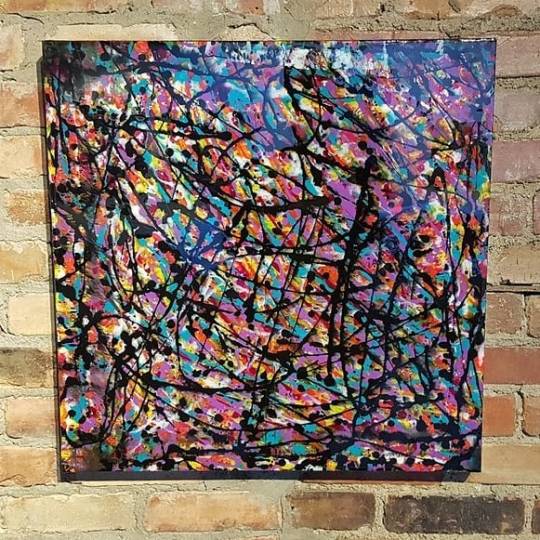
Vivid conquest is an original, abstract expressionism painting with a beautiful variety of vibrant colours https://alexandraromanoart.com/products/vivid-conquest-original-abstract-expressionism-painting Available for Purchase $1,600 CDN Ships Worldwide, Ready to Hang Enter code IG2021 to save 10% #alexandraromanoart #artworkforsale #abstractexpressionism #abstract #abstractpainting #abstractartwork #abstractart #artforsale #artforsaleonline #artforsale #contemporarypainting #contemporaryart #homedecor #handmade #handmade #colorful #colorful #vibrantart #vibrantart #bold #stylish #modernart #modernart #modernhouse #modernhome #vibrant #workofart (at Toronto, Ontario) https://www.instagram.com/p/CJ3BBUnH0D4/?igshid=l452d0n0yeax
#alexandraromanoart#artworkforsale#abstractexpressionism#abstract#abstractpainting#abstractartwork#abstractart#artforsale#artforsaleonline#contemporarypainting#contemporaryart#homedecor#handmade#colorful#vibrantart#bold#stylish#modernart#modernhouse#modernhome#vibrant#workofart
12 notes
·
View notes
Photo

Success Depends on Your Patience. #rakaquote #quote_girl_7 @rakaquote @quote_girl_7 #motivation #quote #motivationalquotes #lifequote #shayari #loveshayari #bollywood #indiaquote #indian #shayyar #zindgikevichar #vichar #achevichar #beautifulline #awesomeshayri #lajawab #succesquote #quoteline #quotelatter #oneline #forever #everforever #duniya #lifegoeson #trending #ig2021 #dream #meriduniya https://www.instagram.com/p/CVvlvO5Bw4t/?utm_medium=tumblr
#rakaquote#quote_girl_7#motivation#quote#motivationalquotes#lifequote#shayari#loveshayari#bollywood#indiaquote#indian#shayyar#zindgikevichar#vichar#achevichar#beautifulline#awesomeshayri#lajawab#succesquote#quoteline#quotelatter#oneline#forever#everforever#duniya#lifegoeson#trending#ig2021#dream#meriduniya
0 notes
Text
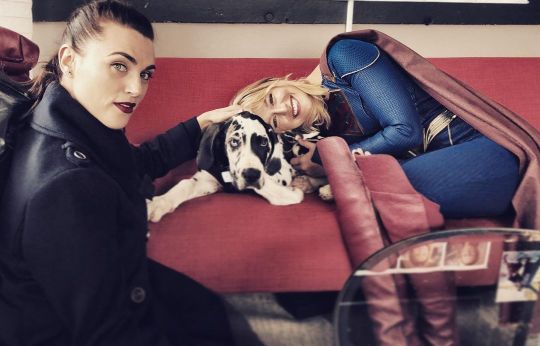
burnettsimonstunts: Been interesting posting so much about this episode on Instagram . I can tell you that I’ve got a million messages about these two. Mel and Katie have a couple of great scenes together in this episode . . Both are very grounded, down to Earth, and helped me as friends would directing my first episode of TV .
As you can see Hero enjoys hanging out with them too
#ig#ig2021#instagram2021#katie mcgrath#katiemcgrath#lena luthor#meltie#melissa benoist#melissabenoist#supercorp
136 notes
·
View notes
Text




(screen capture)
100 notes
·
View notes
Text
Melissa Benoist via her story instagra (Part2)
78 notes
·
View notes
Text
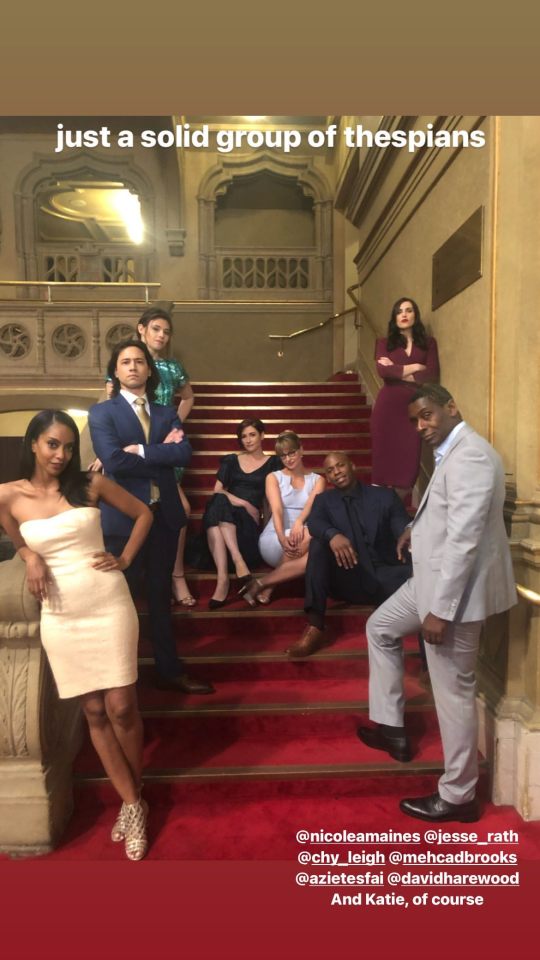
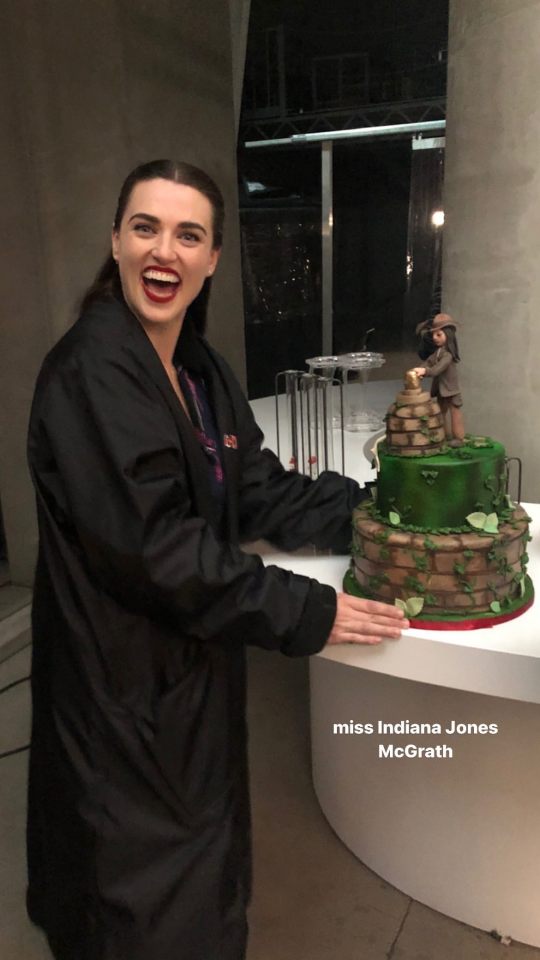
Melissa Benoist via her story instagram
93 notes
·
View notes
Text
Melissa Benoist via her story instagra (Part1 )
65 notes
·
View notes
Text
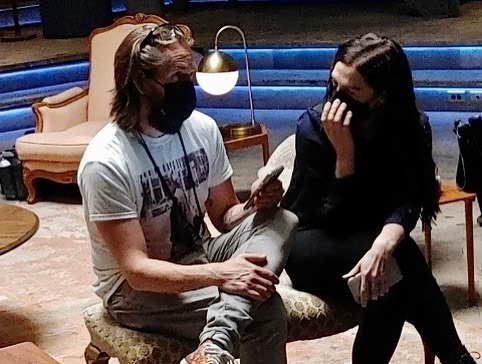
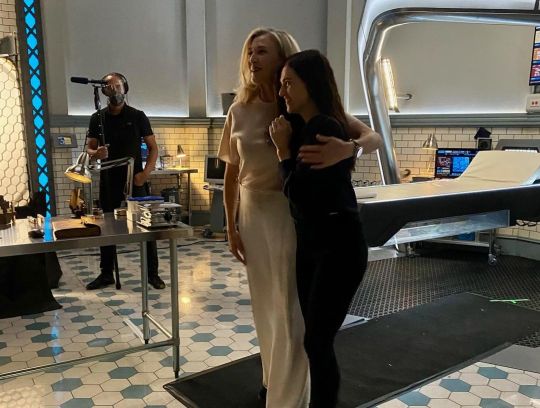
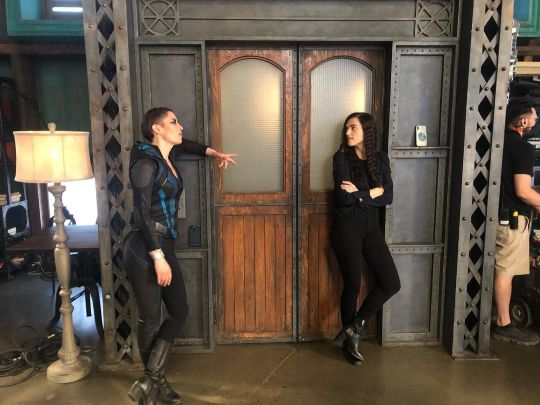
Via Jesse Rath IG
44 notes
·
View notes
Text
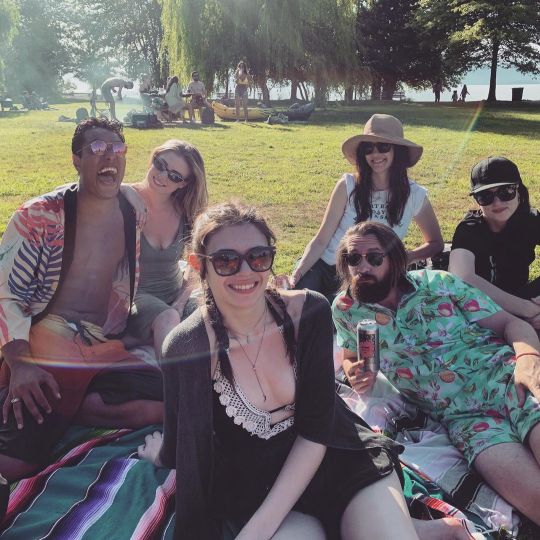

(xx)
146 notes
·
View notes
Text
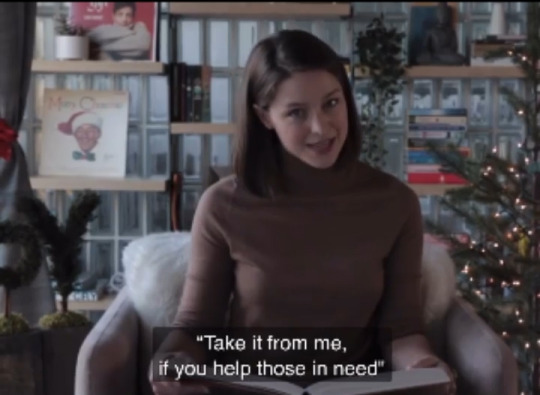
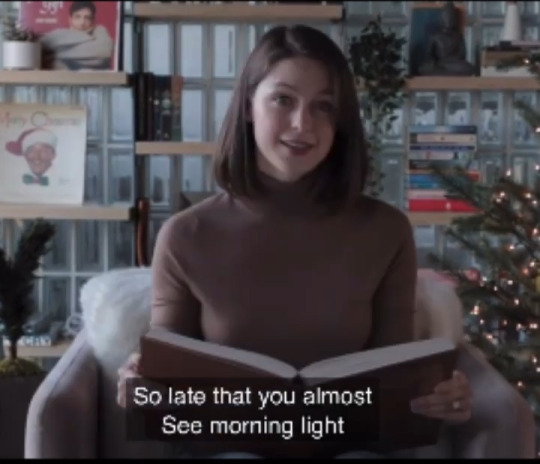
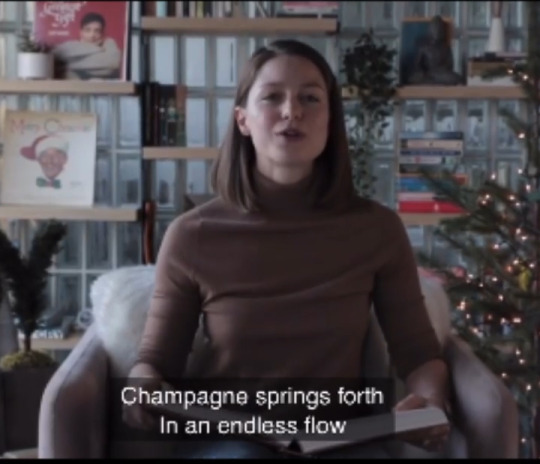
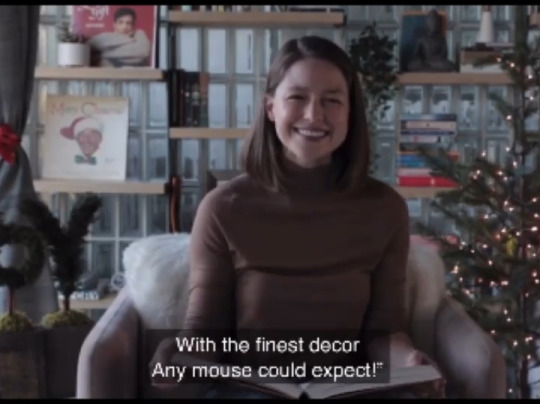
(Screen Captures)
25 notes
·
View notes
Text

MelissaBenoist: Had the best time with @JimmyKimmel last night! #Kimmel @JimmyKimmelLive #ABC
Can’t WAIT to put my son in his new Kimmel (or Fiddler on the Roof?) costume for Halloween👌
47 notes
·
View notes